Meyer Lemon Tarts
These Meyer Lemon Tarts are prepared with pâte sucrée dough and filled with a luscious Meyer lemon curd. Top with fresh raspberries or toasted meringue!
These Meyer Lemon Tarts are the best dessert to come out of my kitchen in a long time!
Since starting culinary school, tarts have become one of my favorite things to bake. Since finding Meyer lemons at the grocery store, I’ve been dying to share a classic lemon tart.
Native to China, Meyer lemons are actually a cross between a Mandarin orange and lemon. Meyer lemon zest is deep yellow in color and the juice is slightly sweeter than standard lemons.
Since Meyer lemons are generally more expensive and can be difficult to find, particularly out of season, feel free to substitute the Meyer lemon juice in this recipe with regular lemon juice. You may want to add a touch more sugar to round out the flavors.
These classic Meyer Lemon Tarts are prepared with pâte sucrée crust, which is close in texture to a sugar cookie dough crust, and filled with a luscious homemade Meyer lemon curd. It comes together in a cinch.
If you’re looking for visual guidance on how to prepare the tart dough, I highly recommend watching the video included in this recipe for Citrus and Berry Tartlets!
Equipment and Make-Ahead Tips:
While this recipe prepares individual (4-inch) tarts, feel free to substitute the tart rings with a standard tart pan with a removable bottom. If you do make equipment substitutes, be sure to adjust baking time accordingly.
To help prep ahead, the tart dough and lemon curd can be prepared the night before or several days in advance of assembly and baking.
Leftover dough can always be frozen and re-thawed for future use as well.
Ways to Decorate Meyer Lemon Tarts:
To make these extra special, decorate the tops with fresh raspberries or cover the curd with soft marshmallow-y Swiss meringue (recipe included below). Lightly brown the meringue in the oven or with a hand-held torch.
Either way, these Meyer Lemon Tarts are sure to win over any crowd.
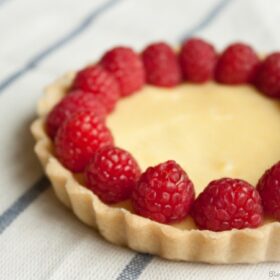
Meyer Lemon Tarts
Ingredients
Pâte Sucrée Tart Dough:
- 12 ounces (340g) unbleached all-purpose flour
- 1½ teaspoons kosher salt
- 8 ounces (230g) cold unsalted butter cubed
- 4 ounces (115g) granulated sugar
- 1 large egg
- 1 teaspoon pure vanilla extract
- ½ teaspoon fresh lemon zest
Meyer Lemon Curd:
- 3 large egg yolks
- 2 large eggs
- 1 oz (28g) cornstarch
- 7 ounces (200g) granulated sugar
- ¾ cup + 1 tablespoon (195 mL) freshly squeezed Meyer lemon juice roughly 4-5 juicy lemons
- 7 oz (200g) cold unsalted butter cubed
Decoration:
- fresh raspberries
- toasted swiss meringue see recipe below
Swiss Meringue (Optional):
- 3 ounces (85g) egg whites roughly 3 large egg whites
- 6 ounces (170g) granulated sugar
Instructions
- Prepare Pâte Sucrée Tart Dough: Place the flour and salt in a pile on a clean working surface. Using a metal bench scraper, chop the cold, unsalted butter into the flour mixture until the butter is finely distributed in small pieces. Pour the sugar over the flour and butter mixture and incorporate thoroughly. Create a well in the center of the mixture.
- Pour the sugar over the flour mixture and incorporate thoroughly. Create a well in center of mixture and add the whole egg, vanilla, and zest. Using your hands and the bench scraper, incorporate the wet ingredients into the dry ingredients by pressing the mixture together as you combine.
- Knead the dough using the “fraisage” method: Use the heel of your hand to press down and smear the dough onto the countertop. Push the dough back together and repeat until the dough is smooth and all ingredients are well incorporated. The dough will have a slight sheen.
- Place the dough between two pieces of parchment or wax paper. Using a rolling pin, roll the dough into a disc roughly ½-inch to ¾-inch thick. This initial rolling out step will help make the final assembly process much easier. Set the dough on a sheet pan and refrigerate for 45 to 60 minutes or until very firm. Freeze any remaining dough for up to 3 months; press into a round disc and wrap tightly in plastic wrap (thaw in the refrigerator overnight before using).
- Shape Tart Shells and Blind Bake: Preheat the oven to 325°F (165°C) with a rack in the center position. Line a half sheet pan with parchment paper and set aside.
- Remove the chilled tart dough from the fridge. You may want to work with half the dough at at time. Using a lightly floured rolling pin and starting from the center of dough and working outward, roll the dough until it is ⅛-inch thick. Throughout the process, lift and move the dough repeatedly on the countertop to ensure it is not sticking. Note: If dough cracks, gently press the pieces back together with your hands and continue to roll. This type of dough is very forgiving.
- Set a tart shell pan on top of the rolled dough to use as a guide. Using a sharp knife, trace and cut out a circle of dough that is 1-inch larger in diameter than the tart pan. Repeat with the remaining tart dough. Set the tart pans on the lined sheet pan and gently transfer the dough pieces on top of each respective tart pan. Using your fingers, press the dough into the edges of the pans to shape each tart shell. Be sure to press the dough tightly inside the corners and sides. Repeat until all tarts are assembled. Note: Leftover scraps of dough can be pressed together and rolled out again to use as needed.
- Dock the bottom of each tart shell with a fork. Line each tart shell with a small square of aluminum foil, ensuring that it reaches into the corners. Fill with dried beans (or pie weights) so that they reach to the top of each tart shell. This will ensure that the tart retains its shape during the blind-baking process.
- Bake the tart shells for roughly 15 minutes. Remove from the oven and carefully lift out the foil with the beans. Place the uncovered tart shells back in oven and bake for an additional 5 to 7 minutes or until the tart dough is cooked all the way through and looks dry. Set the tart pans on a wire rack to cool completely.
- Prepare Meyer Lemon Curd: Combine the egg yolks, whole eggs, cornstarch, sugar, and Meyer lemon juice in a medium saucepan. Whisk until smooth. Set the pan over medium-low heat and cook the curd, whisking constantly, until it starts to bubble and become thick.
- Remove the curd from the heat and add the cubed butter, a little bit at a time, whisking continuously until incorporated and smooth. Strain the curd through a fine-meshed sieve set over large bowl. Cover the curd tightly with plastic wrap and refrigerated until chilled.
- Assemble and Decorate Tarts: Carefully remove the blind-baked tart shells from the tart pans. Remove the chilled lemon curd from the fridge and stir until smooth. Using a pastry bag fitted with a round tip (or a spoon), fill each tart shell with lemon curd. Leftover lemon curd can be stored in an airtight container in the refrigerator for 1 to 2 weeks.
- Just before serving, top with swiss meringue (see instructions below), fresh raspberries, or serve as is. Serve the tarts slightly chilled or at room temperature.
- Prepare Swiss Meringue Topping (optional): Combine the egg whites and granulated sugar in a stand mixer bowl. Set the bowl over a bain-marie and using the stand mixer whisk attachment, whisk the mixture until the sugar has fully dissolved (you should feel no sugar when you rub a small portion of the warm mixture together between your fingertips).
- Remove from the heat and using the stand mixer, beat at high speed until stiff peaks form. Transfer the meringue to a piping bag fitted with a small star tip. Once the lemon tarts have been assembled, pipe the meringue onto the lemon curd. Toast the meringue using a hand-held kitchen torch or under the oven broiler watching carefully the entire time to avoid burning.

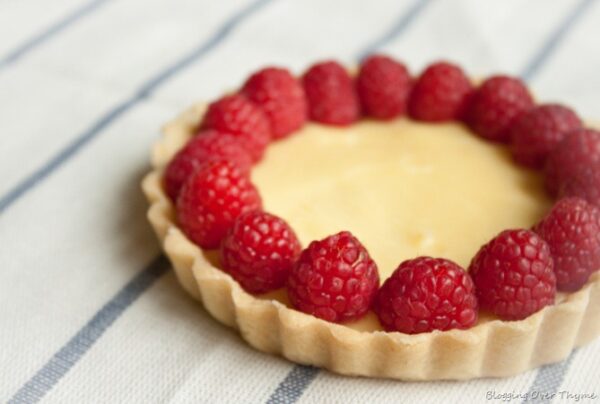
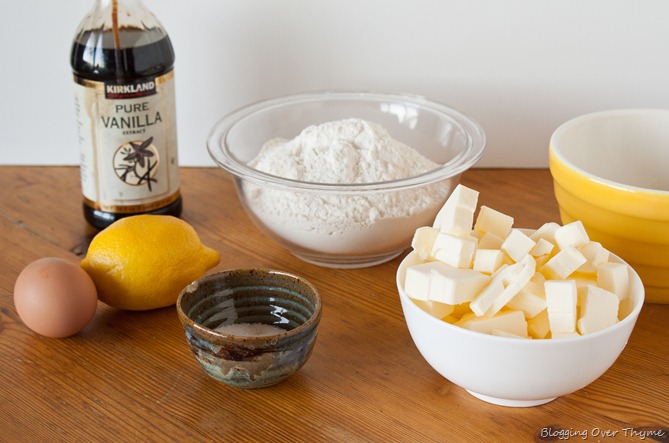
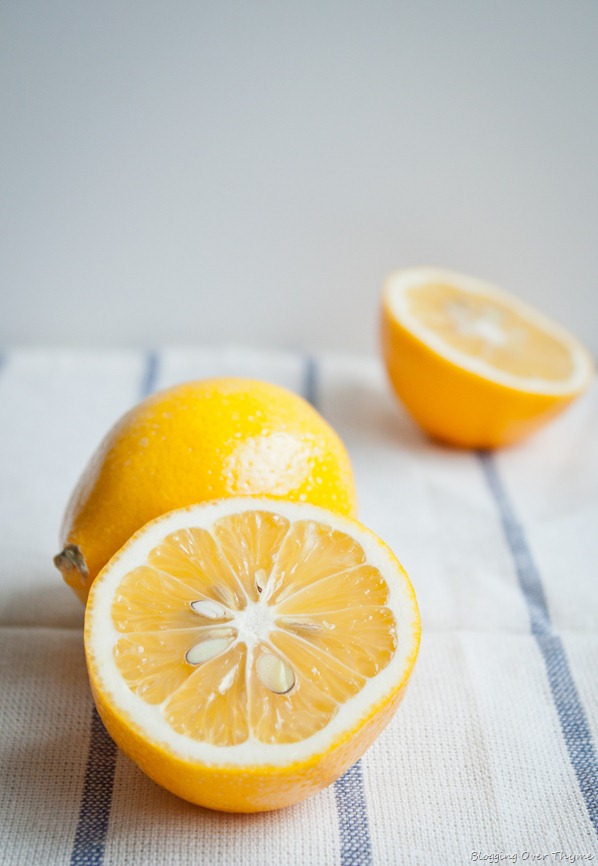
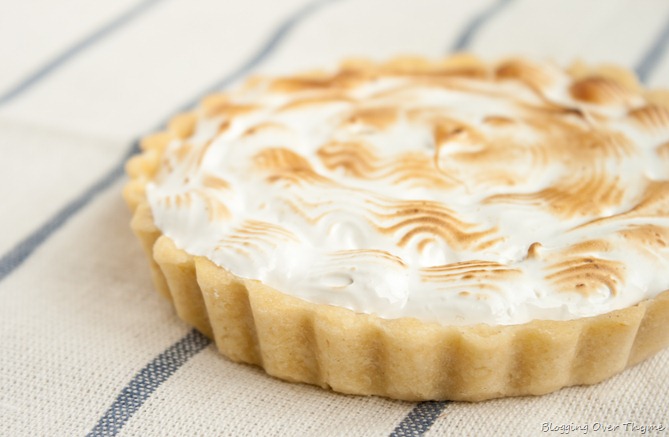
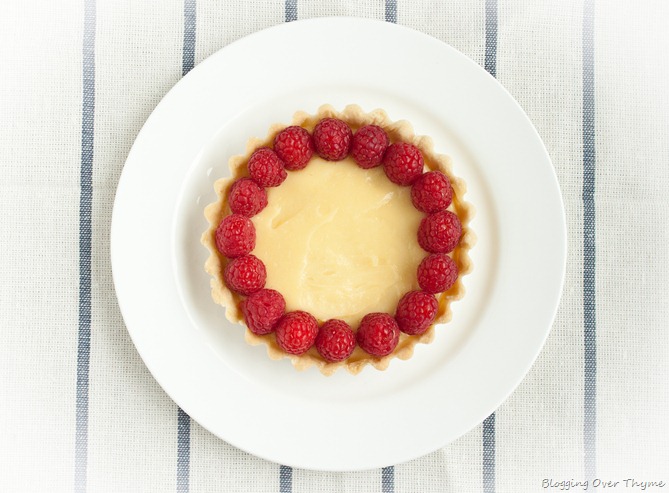
4 Comments on “Meyer Lemon Tarts”
Pretty, pretty tarts!
Gosh those look good. Citrus curd is one of my favorite things. I made clementine curd couple weeks ago. That meringue topping looks amazing. Great photos Laura!
What a pretty looking tart…I will have to prepare this for the weekend. This will be a blast!
Lemon curd is my favourite! I used to eat it by the spoonful (who am I kidding, I still do). Also – sidenote – love the kirkland vanilla! It is so economical!